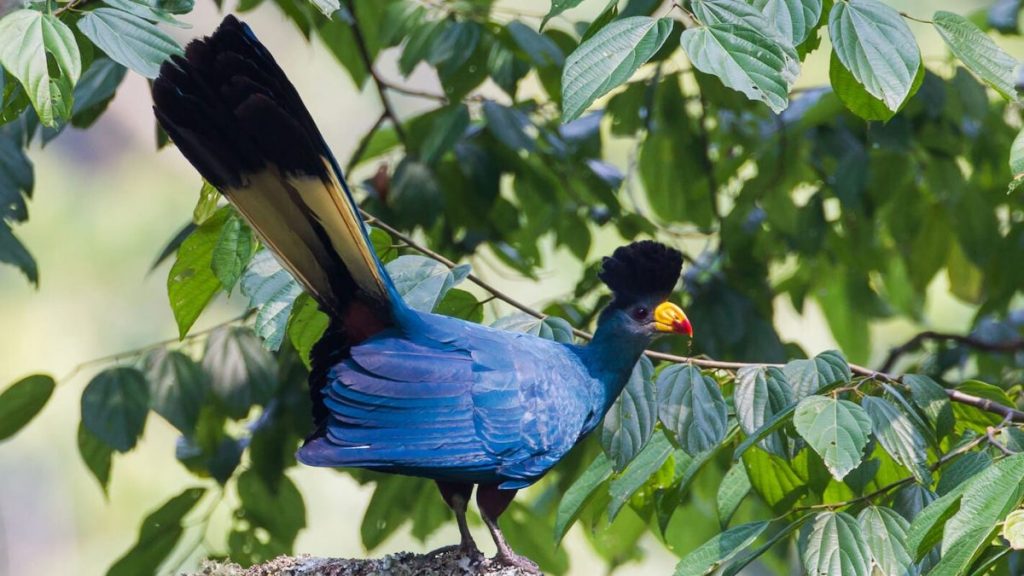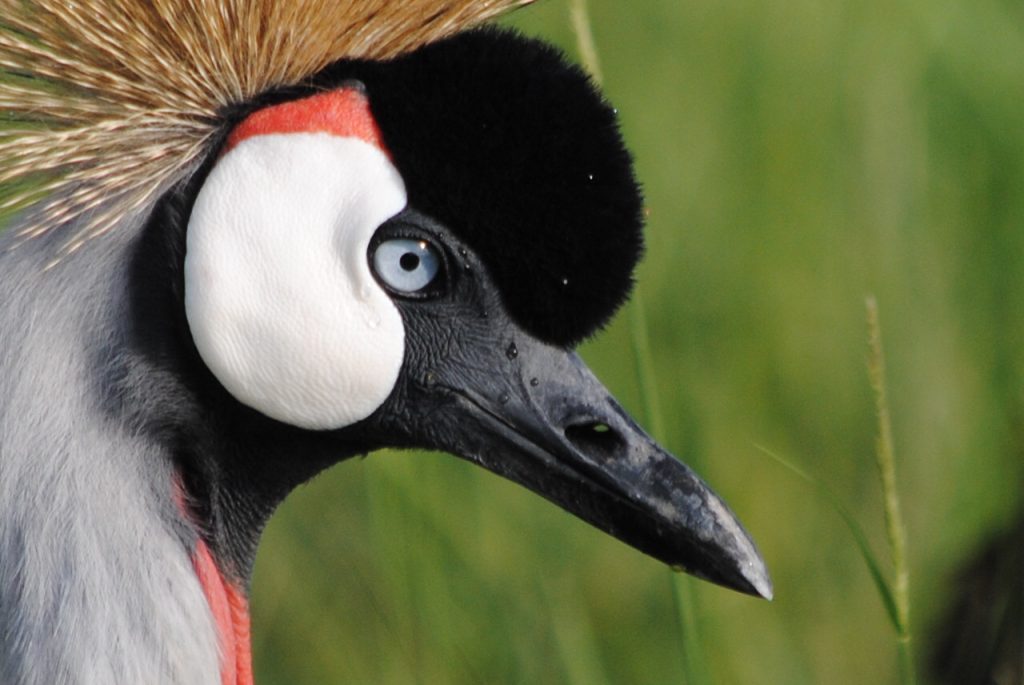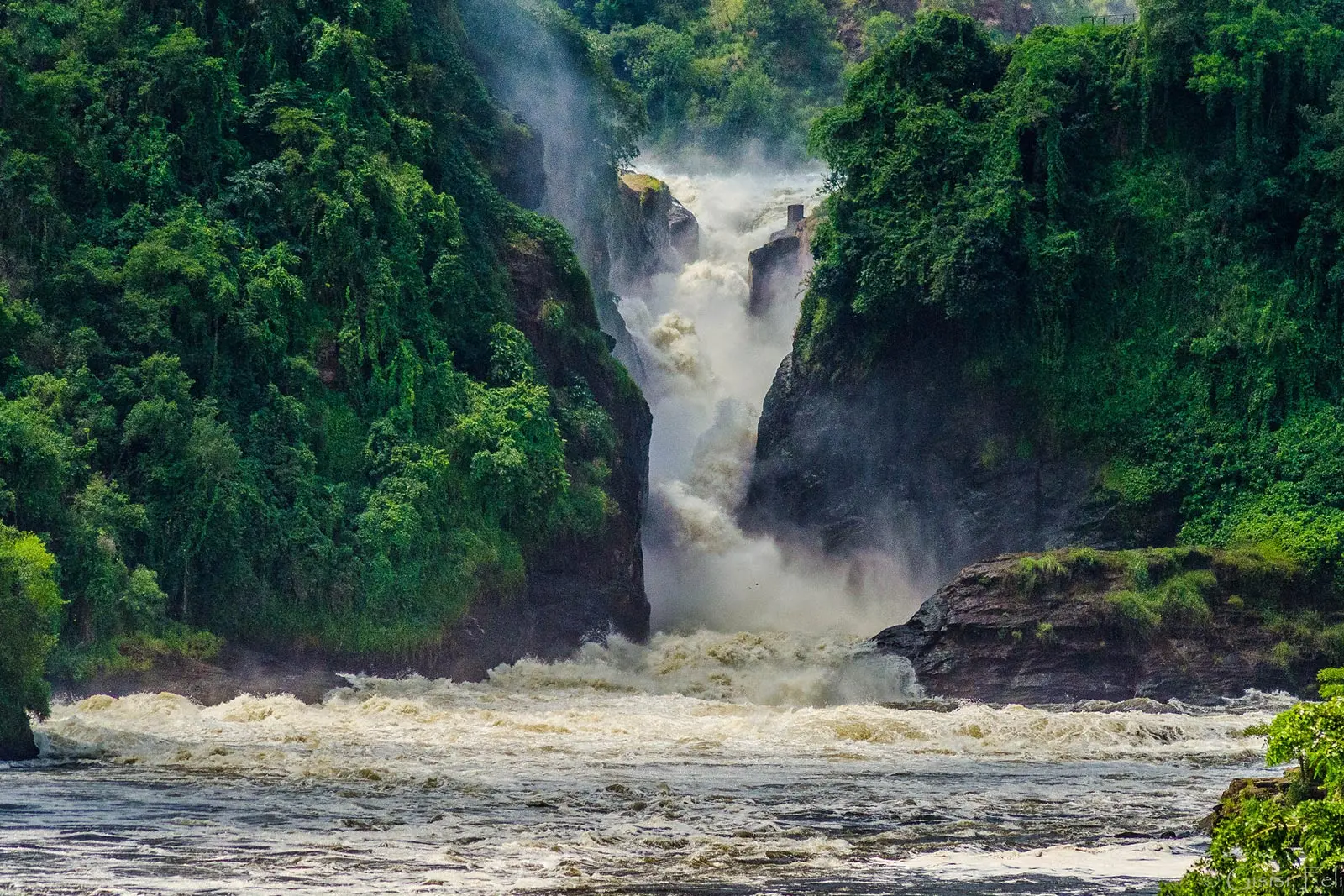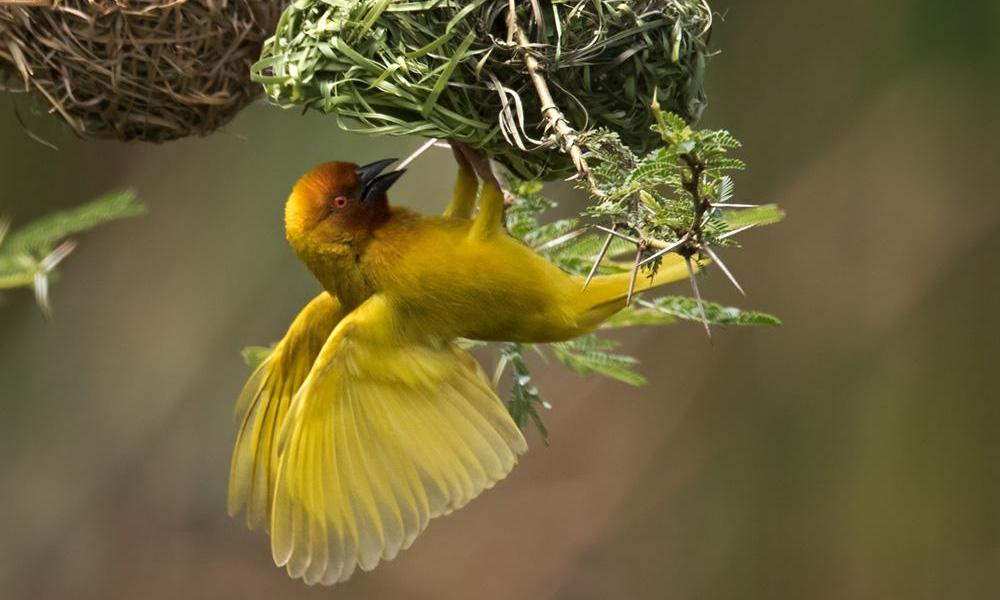Bird-watching in Uganda is a delightful activity that can be enjoyed by birders of all levels. With over 1,104 species recorded in the country, Uganda boasts an impressive and varied avian population that will please even the most experienced birder! In this article, we will provide an overview of Uganda’s bird diversity and discuss the best places to spot birds as well as some common species to look out for. We’ll also look at endangered species of birds and talk about conservation efforts. Finally, we’ll share some tips on how to make the most out of your birding experience when visiting this beautiful African nation.
Overview of Uganda’s Bird Diversity
You’ll be amazed by the stunning variety of feathered friends Uganda has to offer! With over 1,000 bird species, Uganda is home to one of the most diverse avian populations in Africa. It’s cultural significance is clear: for generations, a variety of Ugandan tribes have revered certain birds for their symbolism and importance to nature. A wide range of habitats—from savannahs and montane forests to wetlands and swamps—contributes to this impressive biodiversity. Humans have had an impact on some species, however; deforestation and other human activities have resulted in the endangerment or extinction of at least 15 bird species in Uganda. Fortunately, conservation efforts are being made to restore these habitats and protect vulnerable species from further harm.
In addition to its incredible diversity, Uganda offers unique opportunities for bird spotting due to its strategic location along trans-African migratory paths. This means that during particular times of year it’s possible to spot rare migratory birds from many different parts of the continent! Birders flock here from all over the world just for this reason—it truly is a birder’s paradise.
Uganda’s varied climate and array of habitats create ideal habitats for a huge number of bird species both resident and migratory. From large raptors like vultures soaring above open plains to small songbirds flitting around tropical rainforest canopies – there’s something here for everyone! With so much beauty on display it’s no wonder why Uganda has become such an important destination for avid birdwatchers everywhere – ready to explore?
Best Places to Spot Birds
Uganda, with its diverse landscapes and rich biodiversity, offers an incredible haven for bird enthusiasts. From the dense forests of Bwindi Impenetrable National Park to the vast wetlands of Queen Elizabeth National Park, this East African gem is a birdwatcher’s paradise. With over 1,000 recorded species, Uganda is home to a remarkable array of avian wonders, including rare and endemic species.

Whether you’re a seasoned birder or a curious nature lover, exploring the best birdwatching spots in Uganda promises awe-inspiring encounters with stunning feathered creatures. In this guide, we will take you on a journey to discover the top places in Uganda where you can immerse yourself in the captivating world of birds, providing you with valuable insights and tips to make the most of your birdwatching adventures.
So grab your binoculars, pack your camera, and get ready to witness the remarkable avian diversity that awaits you in Uganda’s remarkable landscapes.
1. Bwindi Impenetrable National Park:
Known primarily for its population of endangered mountain gorillas, Bwindi is also a haven for bird lovers. The park is home to over 350 bird species, including the African green broadbill, handsome francolin, and the rare African green broadbill.
2. Queen Elizabeth National Park:
This expansive park is renowned for its diverse wildlife, and bird enthusiasts will be delighted by the over 600 species found here. Keep an eye out for the iconic shoebill stork, African skimmer, and African fish eagle as you explore the wetlands, savannahs, and forests of Queen Elizabeth National Park.
3. Murchison Falls National Park:
Located in northern Uganda, Murchison Falls National Park offers stunning landscapes and incredible birdlife. The park’s bird checklist includes over 450 species, such as the Goliath heron, Abyssinian ground hornbill, and the elusive Pel’s fishing owl.
4. Kibale Forest National Park:
Famous for its population of chimpanzees, Kibale Forest is also a birding hotspot. The park’s diverse habitats support over 375 bird species, including the African pitta, green-breasted pitta, and the colorful Great Blue turaco.
5. Lake Mburo National Park:
This compact park is a great place to spot birds, particularly those associated with wetland habitats. Keep an eye out for the African finfoot, African wattled lapwing, and the striking African fish eagle soaring above the park’s lakes and swamps.
6. Semuliki National Park:
Nestled within the Albertine Rift Valley, Semuliki National Park offers a unique birding experience. The park is home to several Central African bird species that are not easily found elsewhere in East Africa. Look out for the rare and beautiful Congo serpent eagle, Nkulengu rail, and the captivating African piculet.
7. Kidepo Valley National Park:
Situated in the remote northeastern corner of Uganda, Kidepo Valley National Park is a hidden gem for birdwatchers. The park’s rugged landscapes are home to over 470 bird species, including the Karamoja apalis, fox’s weaver, and the striking ostrich.
8. Lake Victoria:
As Africa’s largest lake and a significant water body in Uganda, Lake Victoria attracts a wide variety of bird species. The lake’s shoreline and surrounding wetlands provide important habitats for numerous waterbirds. Keep an eye out for the iconic African fish eagle, pied kingfisher, long-tailed cormorant, and the vibrant malachite kingfisher as you explore the lake’s shores.
9. Mabamba Swamp:
Located on the fringes of Lake Victoria, Mabamba Swamp is renowned for its rich birdlife and, in particular, its population of shoebill storks. This large, prehistoric-looking bird is a top prize for birdwatchers visiting Uganda. Mabamba Swamp is one of the best places in the country to spot this elusive and endangered species. Other notable birds found in the swamp include the African jacana, yellow-billed duck, and the secretive papyrus gonolek.
10. Rwenzori Mountains National Park:
Known for its majestic snow-capped peaks and stunning alpine scenery, Rwenzori Mountains National Park is also a birding paradise. The park is home to several endemic species, including the Rwenzori turaco and the handsome francolin. As you explore the montane forests and bamboo zones of this World Heritage Site, you may also encounter the bearded vulture, olive pigeon, and many other high-altitude bird species.
Birdwatching tours are available throughout Uganda for those who want to observe these magnificent creatures up close. Experienced guides will take visitors to some of the best spots for spotting rare birds like the African Pitta or Shoebill Stork while providing valuable information about their behavior and habitat requirements. With so many different species present in this beautiful country, there’s no shortage of opportunities for birdwatchers to explore! Moving on from here we’ll look at some of the most commonly seen species of birds in Uganda.
Most Commonly Seen Species of Birds
Explore some of the most commonly seen species of birds in Uganda, highlighting their unique features, habitats, and the best locations to spot them. Whether you’re a seasoned birder or simply fascinated by the wonders of nature, Uganda’s avian treasures are sure to captivate your senses and leave you in awe of its rich biodiversity.

Please note that bird sightings can vary depending on the season and specific locations. At Tulumbe Travel Safaris, we recommend consulting our experienced guides for up-to-date information on bird species and locations. With our expertise in wildlife safaris and birding expeditions, we can help you maximize your chances of encountering diverse bird species during your visit to Uganda.
| Bird Species | Description | Where to View |
|---|---|---|
| African Grey Parrot | Medium-sized parrot with gray feathers, red tail, and black beak. Known for its intelligence and mimicry abilities. | Mabamba Swamp, Kibale National Park |
| Shoebill Stork | Large, prehistoric-looking bird with a distinctive shoe-shaped bill. Gray plumage and tall stature. | Murchison Falls National Park, Lake Albert |
| African Fish Eagle | Large raptor with a white head, brown body, and hooked beak. Known for its distinctive call and fishing abilities. | Queen Elizabeth National Park, Lake Mburo |
| Great Blue Turaco | Colorful bird with vibrant blue and green feathers, a yellow beak, and a long tail. | Bwindi Impenetrable National Park, Kibale National Park |
| African Crowned Crane | Large bird with a golden crown of feathers on its head, gray body, and long legs. Known for its graceful dance displays. | Kidepo Valley National Park, Queen Elizabeth National Park |
| African Pygmy Kingfisher | Tiny bird with bright blue and orange feathers, a small bill, and a short tail. | Mabira Forest, Budongo Forest |
| Black-and-white Casqued Hornbill | Large bird with black and white plumage, a casque (ornamental growth) on its bill, and a large wingspan. | Semuliki National Park, Kibale National Park |
| Red-faced Barbet | Small bird with a red face, green body, and a thick bill. Often seen perched on branches or tree trunks. | Murchison Falls National Park, Kibale National Park |
| Marabou Stork | Large, bald-headed bird with a gray body, black wings, and a long bill. Often seen near water bodies. | Murchison Falls National Park, Kidepo Valley National Park |
| African Green Broadbill | Colorful bird with green plumage, a wide bill, and a distinctive call. Often found in dense forests. | Bwindi Impenetrable National Park, Kibale National Park |
| African Jacana | Medium-sized wading bird with a long neck, brown plumage, and a long, thin bill. Known for its big feet and ability to walk on floating vegetation. | Queen Elizabeth National Park, Lake Mburo |
| Blue-breasted Kingfisher | Small bird with a bright blue breast, orange belly, and a long, pointed bill. Often seen near water bodies and known for its fishing skills. | Murchison Falls National Park, Kibale National Park |
| Yellow-billed Oxpecker | Small bird with a yellow bill, brown plumage, and a habit of perching on large mammals. Often found on the backs of animals, feeding on ticks and parasites. | Queen Elizabeth National Park, Lake Mburo |
| African Paradise Flycatcher | Medium-sized bird with a long, streaming tail, white underparts, and a blue-black head. Known for its graceful aerial displays and insect-catching abilities. | Bwindi Impenetrable National Park, Murchison Falls National Park |
| Black-headed Gonolek | Medium-sized bird with a black head, red underparts, and a white throat. Often found in shrubby areas and known for its loud, melodious song. | Queen Elizabeth National Park, Murchison Falls National Park |
| Martial Eagle | Large eagle with dark brown plumage, a powerful beak, and a wingspan up to 2.6 meters. Known for its exceptional hunting skills. | Murchison Falls National Park, Kidepo Valley National Park |
| Common Ostrich | Largest bird species with long legs, a long neck, and distinctive feathers. Known for its ability to run at high speeds and lay the largest eggs of any bird. | Kidepo Valley National Park, Lake Mburo, Murchison Falls National Park |
| Sacred Ibis | Medium-sized wading bird with white plumage, a long bill, and black wingtips. Often seen in wetlands and known for its distinctive curved beak. | Queen Elizabeth National Park, Murchison Falls National Park |
Endangered Species of Birds
While Uganda is known for its incredible bird diversity, it’s important to shed light on the conservation challenges faced by some of its avian inhabitants. Here is a list of 10 endangered species of birds in Uganda, highlighting the urgent need for their protection:
| Species Name | Description | Locations |
|---|---|---|
| Shoebill | This iconic bird is known for its large, shoe-shaped bill and stands tall at around 4 to 5 feet. | Murchison Falls National Park, Lake Albert |
| Grey Crowned Crane | With its striking golden crown and elegant dance displays, this crane is Uganda’s national bird. | Queen Elizabeth National Park, Mabamba Swamp |
| African Green Broadbill | This small, elusive bird is prized for its vibrant green plumage and unique vocalizations. | Bwindi Impenetrable National Park |
| African Grey Parrot | Known for its exceptional intelligence and mimicry skills, this parrot is highly sought after. | Budongo Forest, Kibale National Park |
| Papyrus Gonolek | Endemic to the papyrus swamps, this bird features a bold black, white, and red coloration. | Mabamba Swamp, Lake Mburo National Park |
| Nahan’s Francolin | This secretive bird inhabits dense forests and has a distinct call resembling a falling bomb. | Kibale National Park, Semuliki National Park |
| African Green Pigeon | Recognizable by its beautiful green plumage, this pigeon is found in forested areas. | Kibale National Park, Bwindi Impenetrable NP |
| Shelley’s Crimsonwing | Endemic to the Albertine Rift, this small finch dazzles with its crimson and black feathers. | Bwindi Impenetrable National Park |
| Fox’s Weaver | A rare and threatened species, this weaver builds intricate nests and displays intricate songs. | Kidepo Valley National Park, Murchison Falls NP |
| African Finfoot | This unique bird has a striking appearance, with its red beak and distinctive white markings. | Semliki National Park, Murchison Falls NP |
These species represent just a fraction of the endangered birds in Uganda, emphasizing the importance of conservation efforts and sustainable practices to ensure their survival for future generations to admire and appreciate.
Species of Migratory Birds
You may be familiar with common species of birds, such as the Common Sandpiper, White Stork and African Pied Wagtail. However, many of these species migrate in search of a more favourable climate or food supply. We will now explore how migration affects these species and discuss the importance of conservation efforts to ensure their long-term survival.
| Species | Description | Migration Details | Migration Areas in Uganda | Best Time to View (Month) |
|---|---|---|---|---|
| Osprey | A large raptor with a distinct white head and dark wings. It feeds primarily on fish. | Ospreys undertake long-distance migrations, traveling from Europe and Asia to Africa. They cover thousands of kilometers during their journey. | Murchison Falls National Park, Lake Mburo National Park, Queen Elizabeth National Park | January – March |
| White Stork | A tall bird with white plumage, a long neck, and a pointed beak. It often nests on tall structures. | White Storks are long-distance migratory birds, traveling from Europe to Africa. They form impressive flocks during migration. | Mabamba Swamp, Kidepo Valley National Park, Murchison Falls National Park | September – November |
| European Bee-eater | A colorful bird with a slender body, vibrant plumage, and a distinctive curved beak. Main colors: Blue, yellow, green. | European Bee-eaters undertake seasonal migrations, traveling from Europe to Africa. They form large colonies during breeding. | Kidepo Valley National Park, Queen Elizabeth National Park, Murchison Falls National Park | March – May |
| Common Swift | A small bird with a streamlined body, long wings, and excellent flying abilities. | Common Swifts are known for their long and fast migrations. They travel from Europe and Asia to Africa, covering thousands of kilometers. | Bwindi Impenetrable National Park, Kibale National Park, Queen Elizabeth National Park | November – January |
| Pallid Harrier | A bird of prey with a pale plumage, a slender body, and long wings. | Pallid Harriers undertake extensive migrations, traveling from Europe and Asia to Africa. They cover vast distances during their journey. | Kidepo Valley National Park, Queen Elizabeth National Park, Murchison Falls National Park | December – February |
| Whimbrel | A medium-sized wading bird with a long, curved beak and a distinctive striped head. | Whimbrels are long-distance migrants, traveling from Europe to Africa. They undertake remarkable non-stop flights during migration. | Lake Mburo National Park, Queen Elizabeth National Park, Mabamba Swamp | October – November |
| Eurasian Hobby | A small falcon with a dark plumage and long, pointed wings. | Eurasian Hobbies undertake long-distance migrations, traveling from Europe to Africa. They are agile fliers and feed primarily on insects. | Kidepo Valley National Park, Queen Elizabeth National Park, Murchison Falls National Park | August – October |
| White-winged Tern | A graceful bird with a white body, black cap, and distinctive white patches on its wings. | White-winged Terns undertake long-distance migrations, traveling from Europe and Asia to Africa. They breed in wetland habitats. | Mabamba Swamp, Queen Elizabeth National Park, Lake Mburo National Park | April – May |
| Yellow Wagtail | A small bird with yellow plumage and a slender build. It often wags its tail while foraging on the ground. | Yellow Wagtails undertake long-distance migrations, traveling from Europe and Asia to Africa. They prefer open grasslands and wetland habitats. | Mabamba Swamp, Lake Mburo National Park, Queen Elizabeth National Park | September – November |
| African Pied Wagtail | A medium-sized bird with contrasting black and white plumage, a long tail, and a slender build. Main colors: Black, white. | African Pied Wagtails undertake seasonal migrations within Africa, moving to different regions in search of suitable habitats and food sources. | Murchison Falls National Park, Queen Elizabeth National Park, Kidepo Valley National Park | January – March |
| European Roller | A colorful bird with a distinctive blue plumage, a sturdy build, and a hooked beak. Main colors: Blue, brown, black. | European Rollers undertake long-distance migrations, traveling from Europe to Africa. They prefer open woodlands and savannah habitats. | Murchison Falls National Park, Queen Elizabeth National Park, Kidepo Valley National Park | February – April |
These migratory birds visit Uganda from various regions, bringing their unique beauty and adding to the country’s avian diversity
Conservation Efforts
Conservation efforts in Uganda are crucial for protecting the diverse array of avian life. Garden birds, such as the African Pied Wagtail, are particularly susceptible to climate change and human activity. These birds rely heavily on their natural habitats and ecosystems which are being disrupted by increasing urbanization and deforestation. To protect these species, conservationists have been working to create protected areas throughout Uganda that will ensure a safe home for them.

Here is a list of five important ways Ugandans can help conserve bird species:
1. Support local organizations that specialize in conservation:
One of the most effective ways Ugandans can contribute to bird conservation is by supporting local organizations that work tirelessly to protect and preserve bird species and their habitats. These organizations often conduct research, implement conservation initiatives, and raise awareness about the importance of bird conservation. By volunteering, donating, or participating in their programs and events, individuals can actively contribute to the efforts aimed at safeguarding bird populations in Uganda.
3. Promote the responsible use of land resources:
Land-use practices have a significant impact on bird habitats. Ugandans can help conserve bird species by advocating for responsible land-use practices. This involves promoting sustainable agriculture, advocating for protected areas and wildlife corridors, and encouraging the preservation of natural habitats. Balancing human activities with the needs of birds and other wildlife ensures the long-term survival of bird populations and their ecosystems.
4. Participate in clean-up activities in designated wildlife areas:
Pollution, including plastic waste, poses a significant threat to bird species. Ugandans can contribute to bird conservation by actively participating in clean-up activities in designated wildlife areas. By removing litter, plastics, and other pollutants, individuals can help create a safer and healthier environment for birds and other wildlife. These efforts also serve to raise awareness about the importance of maintaining clean habitats for the well-being of bird populations.
5. Reduce plastic waste and other pollutants from entering sensitive habitats:
Minimizing the use of single-use plastics and adopting sustainable waste management practices can have a positive impact on bird conservation. Plastic waste can harm birds through ingestion or entanglement, leading to severe consequences for their survival. By reducing plastic consumption, properly disposing of waste, and promoting recycling and alternative eco-friendly options, Ugandans can contribute to creating cleaner and safer environments for bird species.
6. Plant native trees to restore damaged environments:
Deforestation and habitat loss are major threats to bird populations. Ugandans can help counteract these challenges by actively participating in reforestation and habitat restoration initiatives. Planting native tree species in degraded areas helps create suitable habitats for birds to nest, feed, and thrive. Additionally, native trees support biodiversity by attracting insects and providing food sources for birds. Individuals can engage in community-led tree planting projects or work with local conservation organizations to restore damaged environments and create sustainable habitats for bird species.
By implementing these five important ways to conserve bird species, Ugandans can contribute significantly to preserving the rich avian biodiversity of their country. Every individual’s action, no matter how small, can make a meaningful difference in protecting and ensuring the survival of Uganda’s diverse bird populations for future generations to appreciate and enjoy.
Tips for Birdwatching in Uganda
Having discussed the conservation efforts in Uganda for its bird species, we now turn to birdwatching tips that can help you make the most of your time in this beautiful country. Birdwatching tours provide an excellent opportunity to observe and identify birds from different areas throughout the country. Uganda is home to over 1,000 bird species, making it one of the best places on earth to go on a birding safari. Many tour companies offer guided trips with experienced guides who have expert knowledge about local avian species and can easily point out birds even from a distance.
In addition to taking part in an organized tour, there are plenty of other ways for visitors to explore Ugandan birds on their own. One option is stocking up on identification guides and maps that detail which types of birds are found in each area and where they tend to congregate. Binoculars are also essential for getting a good look at distant birds, but for those looking for something more specialized, high-powered spotting scopes can be rented or purchased locally as well.
Finally, no matter what type of equipment you use or how much experience you have with identifying birds, it’s important that all participants remain respectful towards both wildlife and their human neighbors while out exploring the wilder parts of Uganda – being mindful of noise levels and avoiding disturbing any nests will ensure everyone has a safe and enjoyable experience!
Frequently Asked Questions
Q: What is the total number of bird species in Uganda?
A: Protecting habitats and encouraging eco-tourism are two important ways to help preserve the natural environment of Uganda, including its bird species. According to recent studies, there are a total of 1,061 bird species that have been recorded in Uganda. These species range from small passerines to large raptors and waterfowl. The country is home to hundreds of endemic species – birds that are found nowhere else on Earth – as well as many migratory birds which use the region as a stopover during their long journeys. Conservation efforts such as habitat protection and improved management are essential for protecting these unique species from becoming endangered or extinct in the future.
Q: How long do migratory birds stay in Uganda?
A: Migratory birds play an important role in the ecology of Uganda, and understanding their migration patterns is essential for effective bird conservation strategies. The length of time that migratory birds stay in Uganda varies depending on the species, but most will remain in the country for a few weeks to several months. For example, some species may arrive in late summer and stay until early spring, while others may only spend a few days or weeks before continuing on their journey. By studying these patterns, researchers can better understand how to protect these birds and ensure they have safe habitats during their visits to Uganda.
Q: How can I become involved in conservation efforts for birds in Uganda?
A: You can become involved in conservation efforts for birds in Uganda by protecting their habitats and controlling poaching. This is essential to ensure the survival of bird species, as well as other wildlife, in the region. To protect habitats, you can join local organizations that are dedicated to preserving natural areas or volunteer with a conservation group that works on habitat restoration projects. You can also help control poaching by joining anti-poaching patrols or participating in public awareness campaigns about the dangers of illegal hunting. By taking part in these activities, you will be making a valuable contribution to bird conservation efforts in Uganda.
Q: What kind of birdwatching equipment is recommended for birding in Uganda?
A: Birdwatching in Uganda is an exciting experience that requires the right equipment. Binoculars are essential for getting good views of the birds, so a good pair of 10×42 or 8×32 binoculars is recommended. A spotting scope can also be useful for larger species like storks and raptors. Other helpful items include a field guide to local bird species, a notebook and pen for taking notes, and comfortable clothing and shoes for extended periods of observation. Consider enlisting the help of local guides to take you to the best birding spots in Uganda.
Q: Are there any bird-related festivals or events in Uganda?
A: Yes, there are several bird-related festivals and events in Uganda. The most popular is the annual Birding Festival of East Africa, which takes place in Entebbe. This festival celebrates the diverse bird species found in Uganda and provides an opportunity for birdwatchers to join guided tours and learn more about conservation efforts. During the festival, visitors can take part in a variety of activities such as lectures on birdwatching techniques, workshops on bird identification, and even participate in special birdwatching tours that focus on specific species or habitats. Additionally, there are other smaller events throughout the year that focus on different aspects of Ugandan birds and their conservation.
Conclusion
You’ve explored Uganda’s amazing bird diversity, from the best places to spot birds to the most commonly seen species. Uganda is home to over 1,050 bird species, making it one of the most biodiverse countries in Africa. Many of these species are endangered and require conservation efforts to ensure their survival. Birdwatchers can also enjoy spotting migratory birds that come through during certain times of the year. With a little knowledge and some planning, birdwatching in Uganda can be an unforgettable experience. Whether you’re a beginner or experienced birder, you’ll be sure to find something new and exciting around every corner. By supporting conservation efforts and respecting local wildlife regulations, we can ensure these beautiful creatures will continue to thrive for generations to come.








